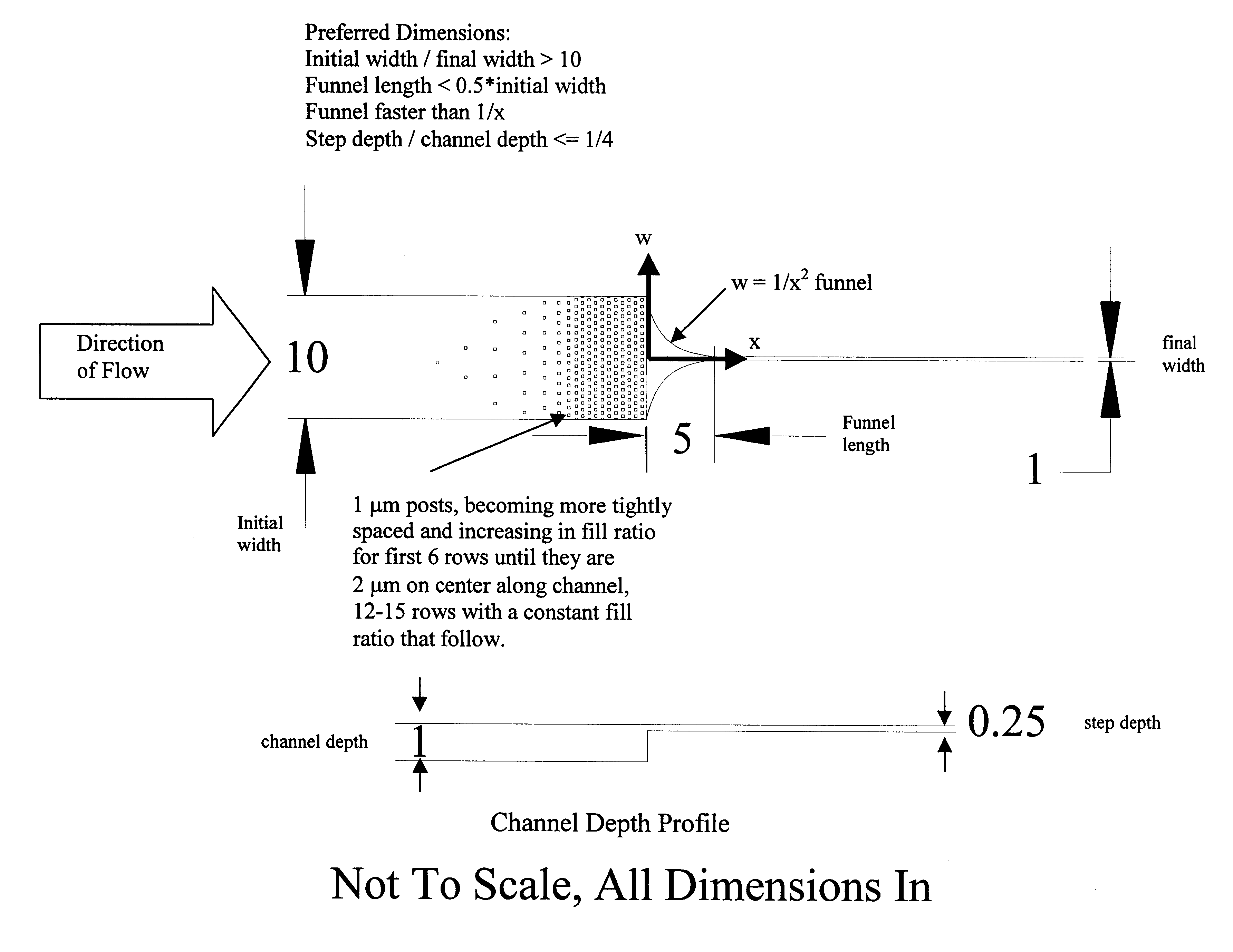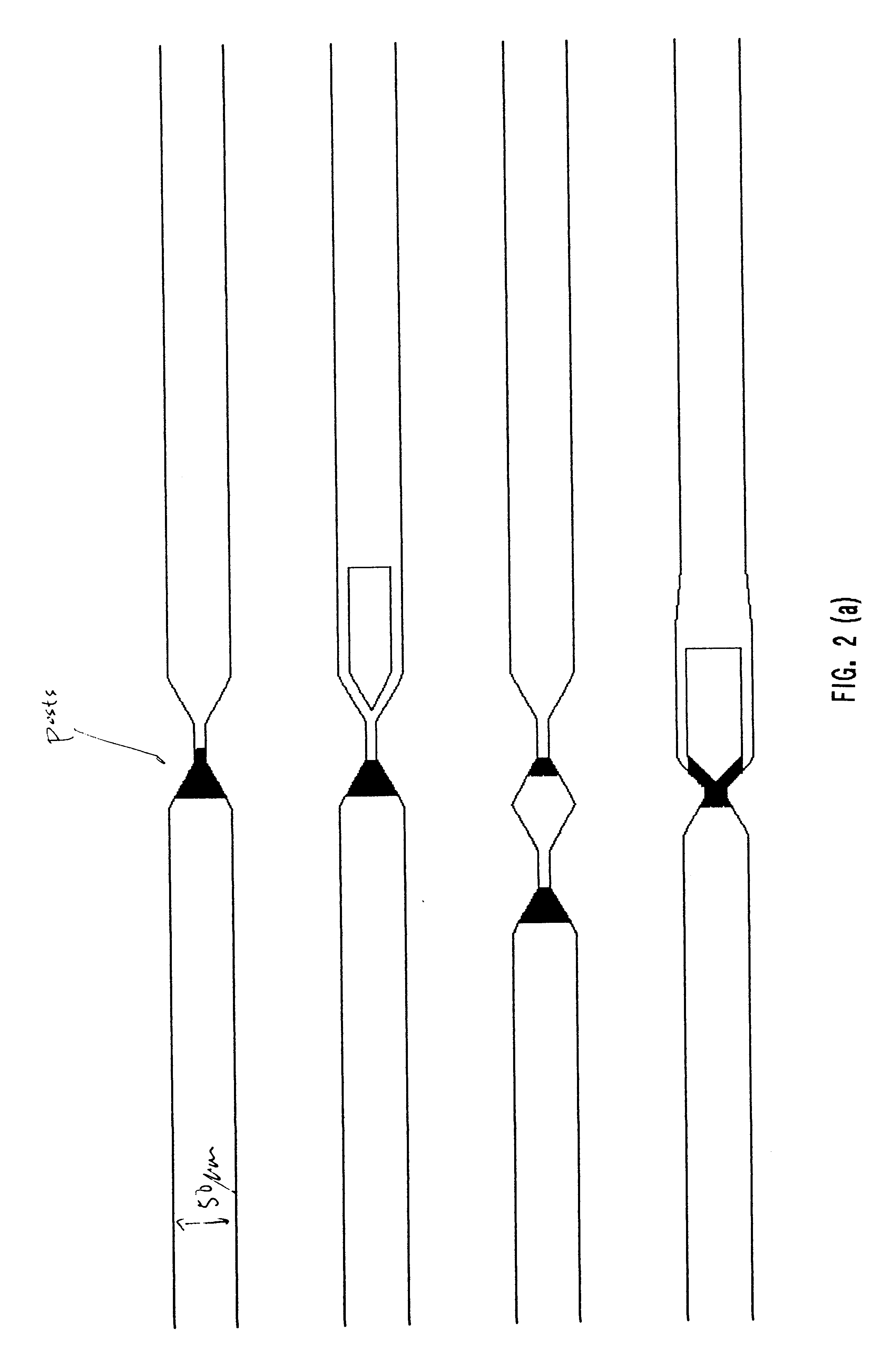Methods and apparatuses for stretching polymers
- Summary
- Abstract
- Description
- Claims
- Application Information
AI Technical Summary
Benefits of technology
Problems solved by technology
Method used
Image
Examples
Embodiment Construction
5.1 Introduction
The present invention provides structures that allow polymers of any length, including nucleic acids containing entire genomes, to be stretched into a long, linear conformation for further analysis. Polymers are loaded into a device and run through the structures, propelled by, inter alia, physical, electrical or chemical forces. Stretching is achieved by, e.g., applying shear forces as the polymer passes through the structures, placing obstacles in the path of the polymer, or a combination thereof. Because the forces are applied continuously, it is possible to stretch out polymers to a length that is equal to or greater than the active area of the apparatus, i.e., where information about the polymer is collected as the polymer is analyzed. For example, if a video camera or laser illuminated volume is focused on the region of the chip where spreading occurs, we can monitor unlimited lengths of DNA molecules, i.e., much larger than the video image or the laser illumin...
PUM
| Property | Measurement | Unit |
|---|---|---|
| Angle | aaaaa | aaaaa |
| Length | aaaaa | aaaaa |
| Force | aaaaa | aaaaa |
Abstract
Description
Claims
Application Information
 Login to View More
Login to View More - R&D
- Intellectual Property
- Life Sciences
- Materials
- Tech Scout
- Unparalleled Data Quality
- Higher Quality Content
- 60% Fewer Hallucinations
Browse by: Latest US Patents, China's latest patents, Technical Efficacy Thesaurus, Application Domain, Technology Topic, Popular Technical Reports.
© 2025 PatSnap. All rights reserved.Legal|Privacy policy|Modern Slavery Act Transparency Statement|Sitemap|About US| Contact US: help@patsnap.com



